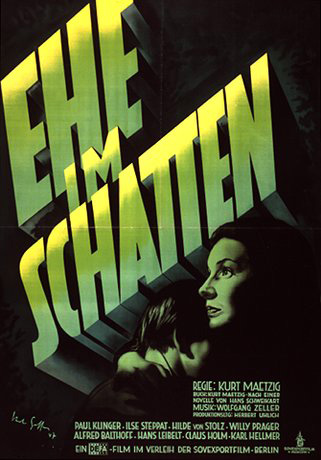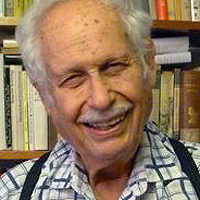
BERLIN — An extraordinary filmmaker who made extraordinary films and lived to the extraordinary age of 101, Kurt Maetzig died August 8. He was virtually unknown in the United States, indeed, in the western world generally. The reason: he lived and worked in the German Democratic Republic (East Germany).
While some of his films were mediocre, many were quite good, even true masterworks, but they were almost totally ignored, indeed boycotted, in the 45 years when they were created.
The Nazis, WWII, Liberation
Maetzig was born January 25, 1911, into a well-to-do Berlin family. He studied in Munich and then the Sorbonne in Paris, got a doctor’s degree and delved into the technical side of filming. When he was 22 the Nazis seized power. Barred from film work, Maetzig defied the Nazis by joining the underground Communist Party in 1944. Maetzig’s father divorced his mother who was Jewish. She eluded the train to Auschwitz only by taking her own life.
Within weeks of liberation, the end of World War II in Europe, he joined a cooperative to copy films for the Soviet Union. But when U.S. troops arrived, the shop was given to an owner who told Maetzig: “I can’t work with you. You’re a Communist!” The reply: “And I can’t work with you. You’re a capitalist!”
Very soon the Soviet Union helped create the first post-war German film company, to be named DEFA (Deutsche Film Aktiengesellschaft). Maetzig was one of a handful of anti-Nazis who got it going. Though a technical expert by training, he was soon directing the first post-1945 German newsreels.
DEFA’s first film, “The Murderers Are Amongst Us,” launched actress Hildegard Kneef’s career. It was a stark condemnation of Nazi war crimes.
Then Maetzig was sent an unprinted story so close to his own story that he quickly began work on “Marriage in the Shadows,” DEFA’s second film. Maetzig’s film dealt with the Nazi pogrom against the Jews.
The story, based on a true case, tells of a talented actor and actress couple. Since she is Jewish the Nazis try to get the husband to divorce her. Unlike Maetzig’s father, he refuses. Her career is ended, his can continue if she remains out of sight. But for his big premiere they weaken, she attends and is recognized, which means her certain deportation. The two, with their small son, commit suicide.
The extremely moving film, finely acted and beautifully directed, premiered in all four sectors of Berlin* in October 1947. It was seen by over eleven million viewers, which means that almost all adults, most of them bitter, confused and cynical after the lost war and in a wrecked country, saw a soul-searing judgment of Nazi bestiality. Its effect cannot be overestimated.
His next film, also sensitive, also successful, chronicled the story of a housemaid who survives two world wars and economic depression, who quietly rejects a job making weapons and tries vainly to persuade her son to do likewise and, in her own small way, also vainly, to help a family of Jewish neighbors.
Then came a hard-hitting exposé of the giant chemical concern I. G. Farben, showing its responsibility for poison gas in World War I, its genocidal murders in World War II and its return after 1945 as Bayer and BASF. With music by the great Hanns Eisler, it did not distort true events, but lacked the sensitivity of the first two films.
Maetzig’s talent at finding deeply human values in the midst of social upheaval was seen again in a saga about conflicts in the countryside when Junkers (landed nobility) were forced to leave their huge, feudal estates, and in a surprisingly light comedy about a girl with constant troubles in finding a place in society, with the tragic background revealed in a brief note from her mother who was murdered at Ravensbrück, the notorious women’s concentration camp.
“Der schweigende Stern” (The Silent Star), a co-production with Poland was a big hit; it was the GDR’s first try at science fiction (based on the book “The Astronauts” by Stanislaw Lem, the great Polish science fiction writer), about a space ship with an international team which finds a planet, once a threat to the Earth, but now totally dead after an atomic catastrophe. A Japanese scientist in the team had herself been scarred as a child by Hiroshima. The connections were clear, the effects simple but very effective. Its irony increased when a western version of the film substituted an American hero for the Russian, a Frenchman for the Pole, and eliminated all references to Hiroshima!
Political changes in the GDR
In 1954-1955 Maetzig blundered. Ten years after the murder by the Nazis of Ernst Thälmann, head of Germany’s Communist Party, its GDR follower, the ruling Socialist Unity Party, wanted a film about his life and deeds and Maetzig accepted the job. But due to the constant meddling by the party, up to and including its head, GDR President Walter Ulbricht, what resulted was not a fine-feeling portrait of a controversial yet certainly heroic figure but rather two full-length films with huge numbers of extras, a bigger-than-life hero, politically correct in every word and deed but with little subtlety and few if any nuances. Maetzig was always ashamed of those two films.
Ten years later he had problems in just the opposite direction. In the early 1960’s when the Berlin wall, nasty as it was, protected the GDR economically and permitted rapid growth and relative openness, there was a large number of frank, honestly critical, often very good books and films. One of the most interesting was Maetzig’s “I Am the Rabbit” (Das Kaninchen bin ich”), a condemnation of careerists, in this case a judge, willing to sacrifice anyone and anything to move upwards, and the courageous fight of a young woman against him, her one-time lover.
But in 1964, Soviet Premier Brezhnev, who had different ideas and a lot of influence in the GDR, exerted pressure in all directions: political, economic and in the arts. The dogmatists had their day and banned a dozen critical films. Maetzig was pressured into criticizing his own film and became deeply discouraged. He directed a few films after that, one interesting and controversial about human genetics, but no more masterpieces.
He turned to work with cinema clubs, becoming vice-president of the international cine-club organization, then its honorary president for life. By the time the pendulum turned, as it so often did in the GDR, and honestly critical films were produced, some of them quite wonderful, it was too late for Maetzig to try again.
The media, in eulogizing Maetzig, concentrates almost completely on the bad Thälmann films and even more, the banned “rabbit” film. In my view his most important film was his first one.
In his own words
Ten years before his death he said: “In all the past decades I was for humanitarianism, for enlightenment, for democratic socialism. That is what led me to join the Communist Party. I kept to those beliefs and I still believe in them.”
*Editor’s Note: After the 1945 Potsdam Conference (including the new British prime minister Clement Attlee, U.S. president Harry Truman, and the USSR head of state Joseph Stalin), what was formerly greater Berlin was divided into four sectors, administered jointly by the Allied powers (the United States, Great Britain, France, and the Soviet Union).
The whole of Germany was similarly divided into four zones. But in 1949, in violation of the Potsdam agreement, the U.S., Great Britain and France united their zones to create the Federal Republic of Germany (West Germany), with Bonn as its capital. Then, also in violation of the Potsdam agreement, they established a new currency for West Germany and illegally made their zones of Berlin a part of West Germany, thus effectively dividing the country.
The remaining zone administered by the Soviet Union later became the GDR. The wall that was eventually constructed surrounded West Berlin, part of the capital city in the middle of a socialist country.
Photo: Poster for “Marriage in the Shadows.”









